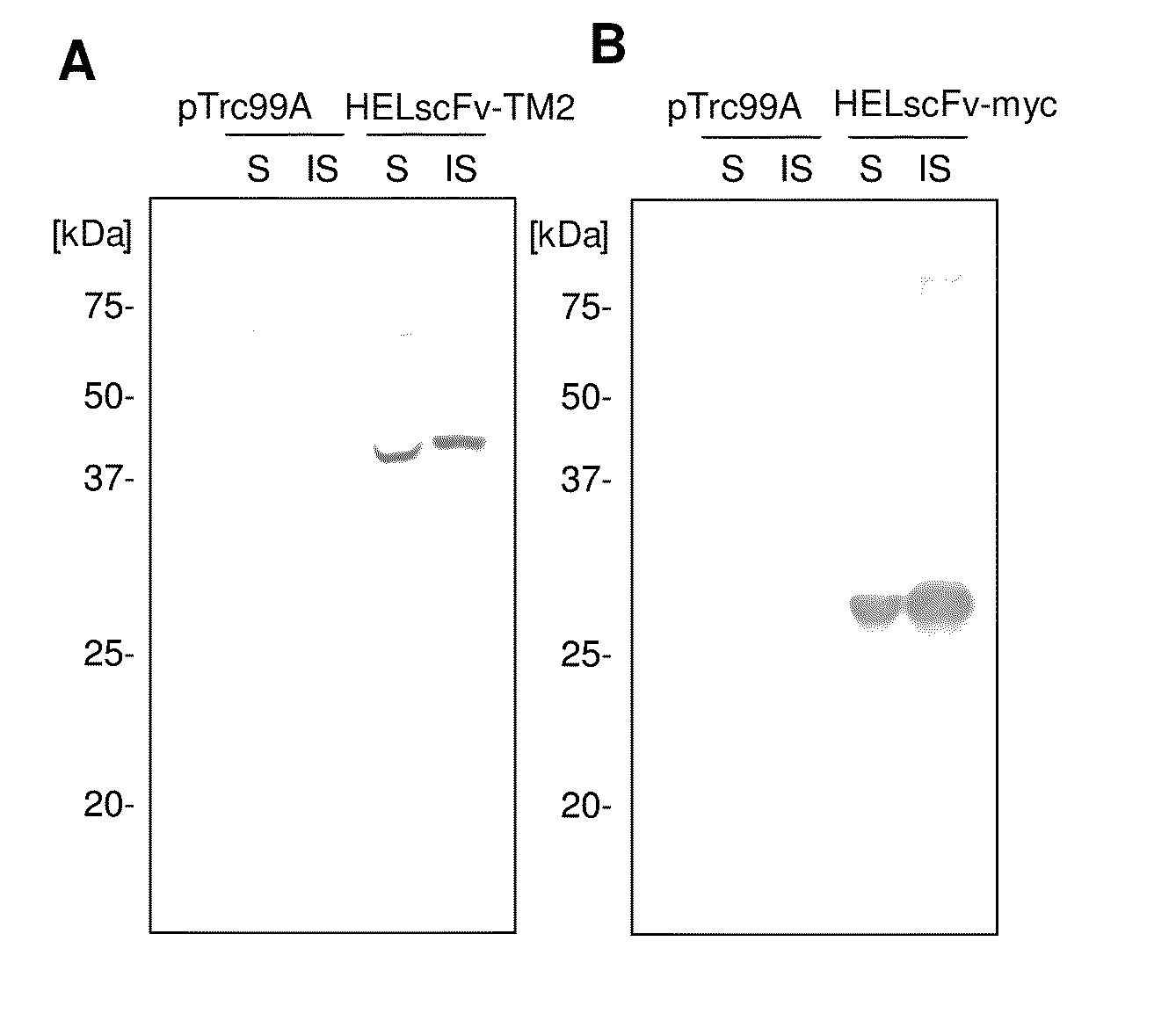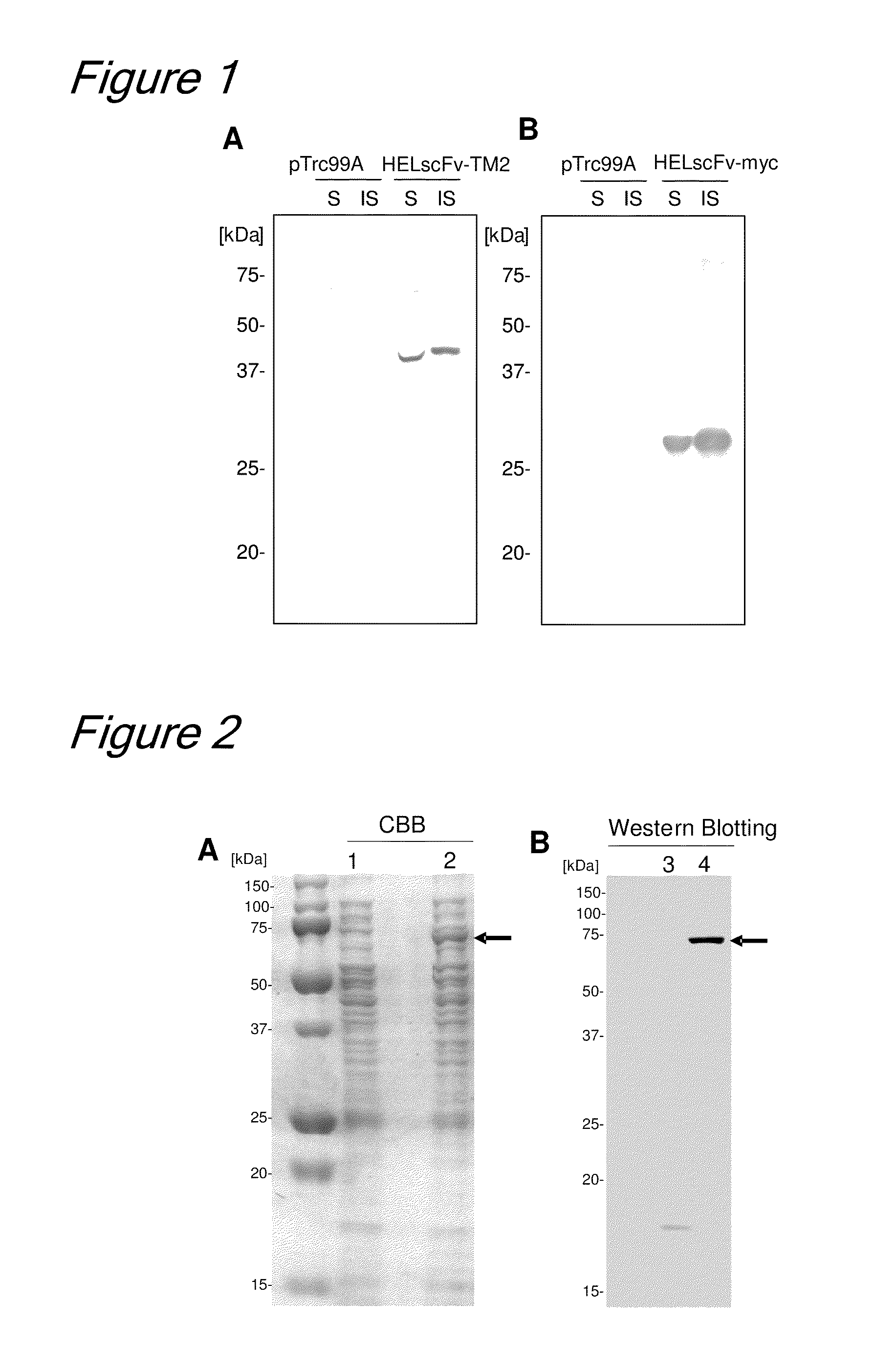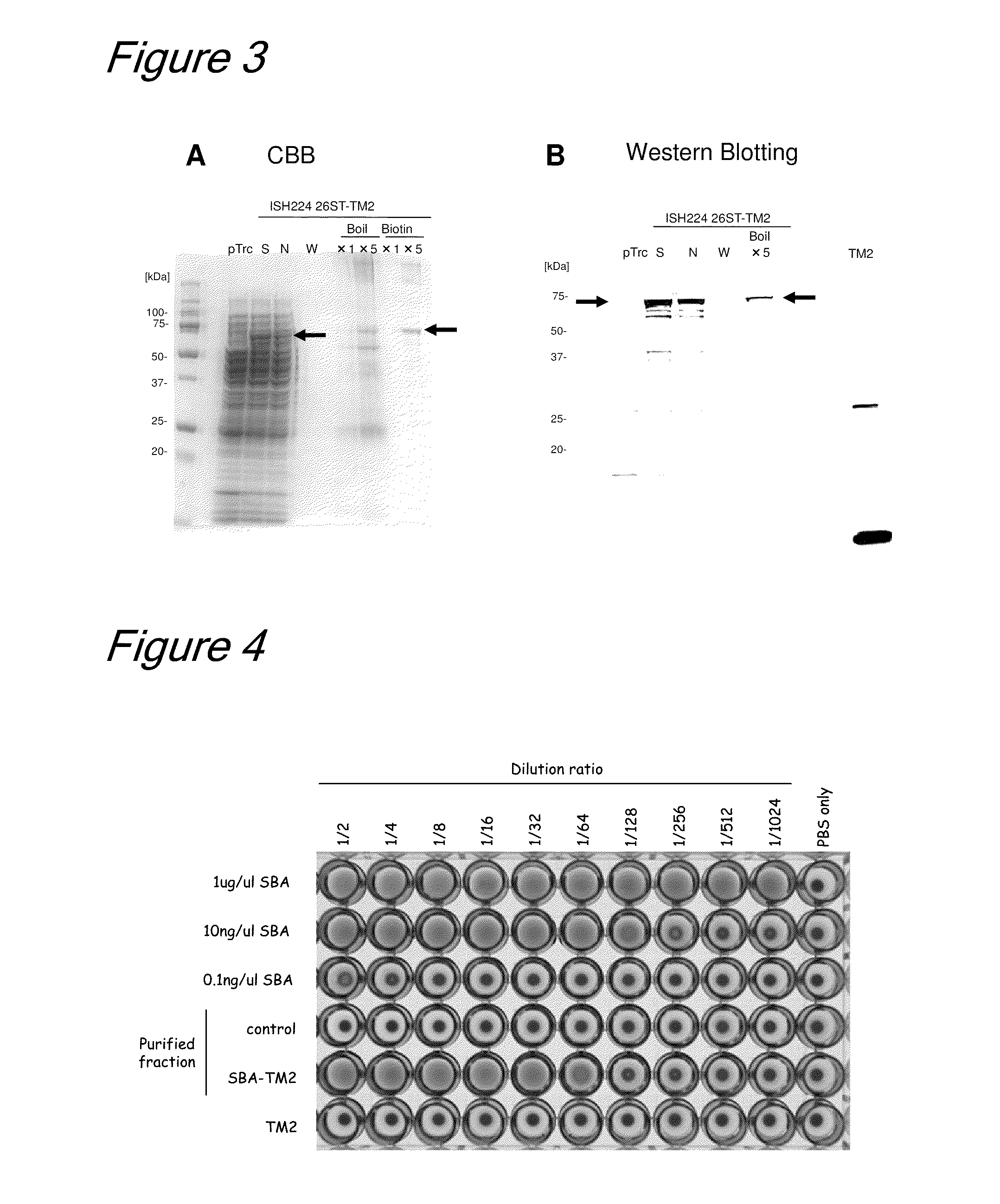Method of binding proteins to carriers by making use of tamavidins
a technology of tamavidin and carrier, which is applied in the field of binding proteins to carriers by using tamavidin, can solve the problems of not being able to be used as all-purpose tools, not being able to achieve strong interaction between histidine tags and nickel ions, and most proteins have their functions lost either completely or partially, so as to achieve strong force, without impairing their functions
- Summary
- Abstract
- Description
- Claims
- Application Information
AI Technical Summary
Benefits of technology
Problems solved by technology
Method used
Image
Examples
example 1
Fusion Protein of Tamavidin and Antibody
[0136]In this Example, a fusion protein of tamavidin 2 and an antibody (HEL antibody's scFv fragment) was expressed in E. coli and immobilized on a carrier plate by tamavidin-biotin bonding. In addition, the antibody's activity for binding to an antigen was investigated. As a control, the antibody was directly immobilized on the plate by hydrophobic bonding. A concrete explanation is given below.
[0137]1-1. HEL Antibody's scFv Fragment
[0138]Using tamavidin 2 (TM2) and an scFv fragment of a mouse anti-hen egg-white lysozyme (HEL) antibody (D1.3), a tamavidin-antibody fused protein was prepared. The gene of the HEL (D1.3) antibody's scFv fragment (Iba et al. (1997) Gene 194: 35-46, and Ideno et al. (2004) Appl Microbiol Biotechnol 64: 99-105) was assigned from Mr. Akira Ideno of SEKISUI CHEMICAL CO., LTD.
[0139]Expression was performed in E. coli and an untagged vector pTrc99A (product of Pharmacia) was used as an expression vector. For the sole e...
example 2
Fusion Protein of Tamavidin and Enzyme
[0178]In this Example, a fusion protein of tamavidin 2 and an enzyme (α2,6 sialyl transferase) was expressed in E. coli and immobilized on carrier magnetic beads by tamavidin-biotin bonding. In addition, the enzymatic activity of the fusion protein was investigated. As a control, the enzyme was immobilized on the beads by covalent bonding. A concrete explanation is given below.
[0179]2-1. Glycosyl Transferase Fused Protein
[0180]As an example of the tamavidin-enzyme fused protein, tamavidin 2 (TM2) and a sialyl transferase, i.e., a kind of glycosyl transferase, were used. As the sialyl transferase, β-galactoside-α2,6-sialyl transferase derived from a bacterium of the genus Photobacterium (PCT / JP2006 / 304993) was used. Note that a gene coding for a type of protein that had the amino acids in the signal peptide portion deleted (ISH224-2,6ST N1C0, PCT / JP2006 / 304993) was used as the gene of the sialyl transferase.
[0181]2-1-1. Construction of Vectors fo...
example 3
Binding of the HELscFv-TM2 Fused Protein to Magnetic Beads
[0219]In this Example, the HELscFv-TM2 prepared in Example 1 was bound to biotinylated magnetic beads and an investigation was made to see if the length of the linker between a magnetic head and biotin would cause any effect on binding to the bead.
[0220]Specifically, Ez-Link (registered trademark) NHS-Biotin (13.5 Å), Ez-Link (registered trademark) LC-Biotin (22.4 Å), and Ez-Link (registered trademark) NHS-LCLC-Biotin (30.5 Å), each being a product of PIERCE, were conditioned with DMSO (dimethyl sulfoxide) to 10 mM. These were added in an amount of 200 μL (2 μM) to 200 μL of Dynabeads M-270 Amine (product of PIERCE) and allowed to react at room temperature for 30 min, whereby each of the biotinylating reagents was bound to the magnetic beads.
[0221]Subsequently, the beads were washed twice simultaneously blocked with 400 μL of a PBS buffer solution (10 mM sodium phosphate and 150 mM NaCl, pH 7.4) containing 0.1% BSA and 0.01% ...
PUM
| Property | Measurement | Unit |
|---|---|---|
| temperatures | aaaaa | aaaaa |
| temperature | aaaaa | aaaaa |
| diameter | aaaaa | aaaaa |
Abstract
Description
Claims
Application Information
 Login to View More
Login to View More - R&D
- Intellectual Property
- Life Sciences
- Materials
- Tech Scout
- Unparalleled Data Quality
- Higher Quality Content
- 60% Fewer Hallucinations
Browse by: Latest US Patents, China's latest patents, Technical Efficacy Thesaurus, Application Domain, Technology Topic, Popular Technical Reports.
© 2025 PatSnap. All rights reserved.Legal|Privacy policy|Modern Slavery Act Transparency Statement|Sitemap|About US| Contact US: help@patsnap.com



